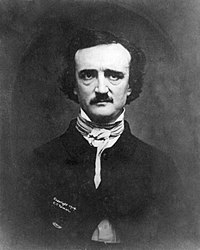 The narrator’s reason for the murder in “The Tell Tale Heart” was because the old man’s eye was like that “of a vulture --a pale blue eye, with a film over it” (Poe, 1996, p. 555). He felt that “Whenever it fell upon me, my blood ran cold; and so by degrees --very gradually --I made up my mind to take the life of the old man, and thus rid myself of the eye forever” (Poe, 1996, p. 555). The eye tormented the narrator just as the empty eye socket of the cat did in “The Black Cat.” In both cases the eye (or lack of an eye) leads the narrator to kill. In the case or the Tell Tale Heart, it was the old man.
The narrator’s reason for the murder in “The Tell Tale Heart” was because the old man’s eye was like that “of a vulture --a pale blue eye, with a film over it” (Poe, 1996, p. 555). He felt that “Whenever it fell upon me, my blood ran cold; and so by degrees --very gradually --I made up my mind to take the life of the old man, and thus rid myself of the eye forever” (Poe, 1996, p. 555). The eye tormented the narrator just as the empty eye socket of the cat did in “The Black Cat.” In both cases the eye (or lack of an eye) leads the narrator to kill. In the case or the Tell Tale Heart, it was the old man.In “The Raven” and in “The Black Cat”, Poe uses a sound to deliver a message. In “The Raven” it was “Nevermore”, in “The Black Cat” it was the sound of the trapped cat behind the wall, and in “The Tell Tale Heart” it is the sound of the old man’s beating heart. Each of those messages was directed towards the narrator as could be considered audible reminder or nomination that their deed was not forgotten or hidden and that they will pay for their actions.
Works Cited
Poe, E. A. (1996). In P. F. Quinn, & G. R. Thompson, Poe Poetry, Tales & Selected Essays (p. 81). New York City: Literary Classics of the United States, Inc.
"Edgar Allen Poe", daguerreotype taken in 1848 by W.S. Hartshorn, shortly before Poe's death.